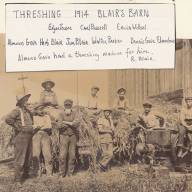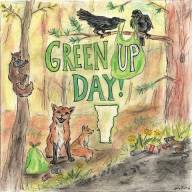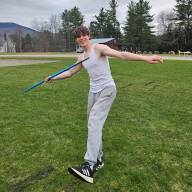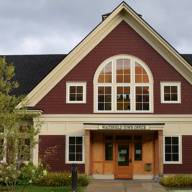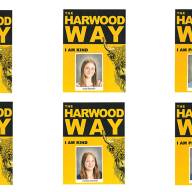An exhibit about how indigenous communities experienced the COVID-19 pandemic hangs at Mad River Valley Arts in Waitsfield through January 6.
“Beyond the Curve: American Abenaki COVID Experience” displays art objects and stories submitted by Abenaki artists living in Vermont and beyond. Its title, “Beyond the Curve,” refers to official messaging that began in 2020 about “flattening the curve” – slowing the spread of the epidemic.
All artworks and stories on display emerged from the Abenaki Storytelling Project – an ongoing project that collects stories about the lived experiences of the Abenaki community, initiated by the Vermont Abenaki Arts Association (VAAA).
“I guess I’d call it an evolution,” Vera Longtoe Sheehan, curator and executive director of the VAAA, said. As artists continued to submit their work even after the show was put together, the VAAA decided that works would be swapped out as the show traveled among different sites, allowing new themes to emerge. “It’s a living and breathing exhibit,” Sheehan said.
A PATHWAY FOR GRIEF
Many of the shows’ objects highlight the ways that American Abenaki communities turned to ancestral arts during the pandemic – making textiles, jewelry, stoneware, and ash wood baskets. “Beyond economic reasons, these art forms provided a creative outlet for processing the stress and uncertainty of the pandemic,” Sheehan wrote in the shows’ materials.
There are also several photographs on display – including a wall of photos commemorating loved ones who were lost during the pandemic. Artist Katie Adams, who submitted a photo of her late daughter, wrote, “I need positive creative projects to help me through my grief pathway.”
Some works call attention to health disparities and issues of health care access. Items like N-95 masks, hand sanitizer and gloves are assembled in a glass case. “Our [Abenaki] community wasn’t able to get Personal Protective Equipment,” Sheehan said. “Even when it became available, it wasn’t affordable.” The same was true for COVID-19 tests, Sheehan added, until the VAAA worked with the Vermont Department of Health to distribute about 700 kits to Abenaki families and communities.
HISTORIES OF MISTRUST
A prominent theme in the show is the uncertainty and apprehension surrounding COVID-19 vaccines within the Abenaki community. In 2019, the Vermont Department of Health found that Vermonters who identify as Native American, Indigenous or First Nations had the lowest up-to-date COVID-19 vaccination rates.
Artworks and stories point to myriad reasons for the hesitancy, including concerns about adverse effects for those with pre-existing health conditions. According to the Centers for Disease Control, chronic conditions like diabetes, high blood pressure and arthritis are disproportionally prevalent among Indigenous populations in the U.S.
Artists also pointed to long histories of mistrust in governmental institutions among the Abenaki. Francine Poitras Jones’ painting depicts a scene of nude bodies running chaotically or laying lifeless on the ground, with gravestones lined up in the background while large hypodermic syringes hang overhead, dripping yellow liquid onto the people below.
Other works and bits of text in the show reference forced sterilization programs and stolen lands. Artist Julia Marden exhibits intricately beaded pieces of deer hide, with one portraying the Indian Removal Act – an 1830 law that forcibly displaced Native American tribes from their homelands in the Eastern U.S.
ESTEEMED WOMEN
The use of indigenous medicines and healing practices, then, also feature prominently in the show. Paul Rene Tamburro, who is showing jewelry made of silver and beads, wrote that in addition to using traditional medicine for prevention and healing from COVID-19, it’s also crucial for healing from health issues that come with climate change, and from multigenerational trauma that began with 15th century European contact.
Artist Rhonda Besaw displays a large Chaga mushroom with a thick braid of grass draped over it. She said that historically, Abenaki people have responded to outbreaks of illness by reaching out to community healers, many of whom are women. “Such esteemed women were not only proficient in the physical art of healing through the use of plants and herbs, but had the gift of second sight,” she wrote, referring to healers’ dreams, which she said can contain information about preventions and cures.
Besaw also exhibited a bag embroidered with an image of Doris Minckler – known as Grandmother Mourning Dove among the Abenaki, who she said exemplifies a form of care that combines the mental, spiritual, and physical aspects of a person.
Some pieces in the show work to bridge clinical and traditional medicine, like Aaron York’s stethoscope, adorned with colorful beadwork. “Native American health care workers embellish their stethoscopes with beadwork as a message to clients that their cultural needs will be understood,” York wrote.
TIME TO PROCESS
Sheehan said that the VAAA was formed shortly after four Vermont Abenaki tribes were formally recognized by the state in 2011 and 2012. Tribal leaders approached her to help make an online registry that would connect the public with Abenaki artists who are selling their works.
Unless an artist belongs to or is certified by a state or federally recognized tribe, it is illegal to sell any art or craft product that suggests it is “Indian produced,” according to the federal Indian Arts and Crafts Act of 1990. For a first-time violation, individuals can face penalties up to a $250,000 fine or a five-year prison term, or both.
Sheehan said that the VAAA wanted to curate “Beyond the Curve” because it’s healing for artists to share their artworks and stories, and that it’s healing for members of the public to see the show and perhaps start to process what they experienced during the pandemic.
“Whether you’re Native American or not, the show connects to a lot of things people were feeling during the pandemic, that everyone’s probably familiar with,” she said.
Mad River Valley Arts is located at 5031 Main Street in Waitsfield. The gallery hours are Tuesday through Saturday, 1 to 5 p.m.





